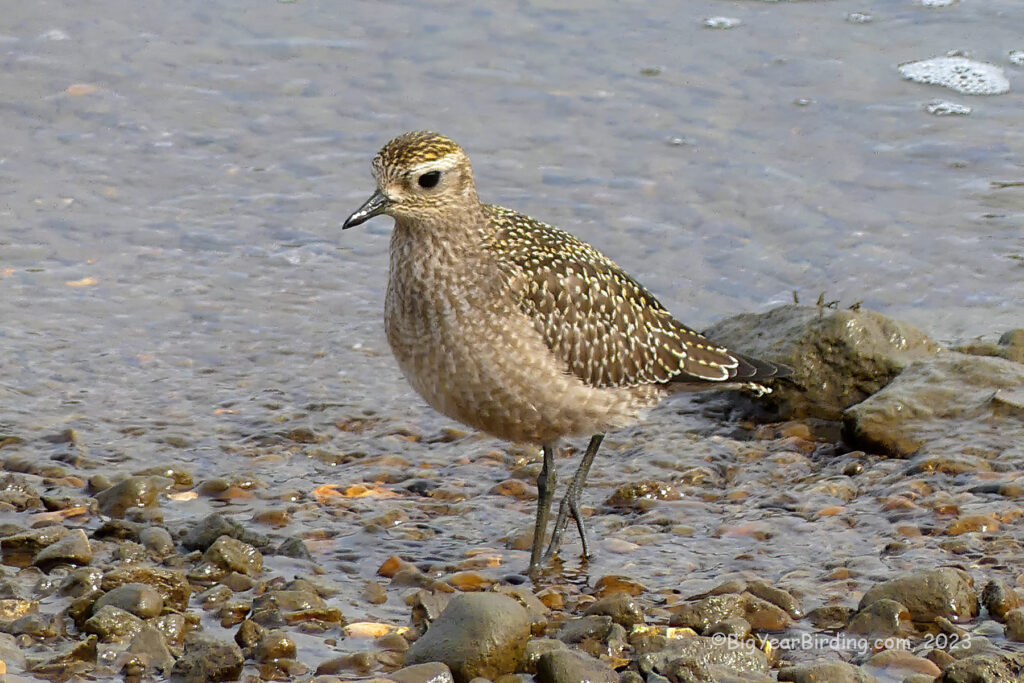
The American golden-plover (Pluvialis dominica) is a medium-sized shorebird that is commonly found across North and South America. Adults measure around 9-11 inches in length and have a wingspan of approximately 20-26 inches. They weigh between 6.5-10 ounces, with males being slightly larger than females. During breeding season, they have distinctive black markings on their faces, necks, and upperparts.

One of the most distinguishing features of the American golden-plover is its striking plumage. During the breeding season, their bellies and undersides are a vibrant black, while their backs and wings are a mottled gold and black. They also have a distinctive white stripe running across their forehead and above their eyes. During the non-breeding season, their plumage becomes more subdued and grayish-brown in color.
American golden-plovers are migratory birds, spending their summers breeding in the Arctic tundra of North America and Eurasia. They then fly south for the winter, spending their time in South America and other parts of the southern hemisphere. In total, their migration can cover over 20,000 miles, making them one of the longest migratory journeys of any bird species.

During migration, American golden-plovers can be found in a variety of habitats, including mudflats, coastal beaches, and grasslands. They are opportunistic feeders, eating a range of insects, crustaceans, and mollusks. They also have a unique feeding behavior, in which they stamp their feet on the ground to startle their prey and then grab it with their beaks.

Unfortunately, American golden-plovers face a number of threats, including habitat loss, hunting, and climate change. Despite these challenges, efforts are underway to protect their breeding and wintering grounds and promote conservation measures that can help ensure their survival for future generations.

